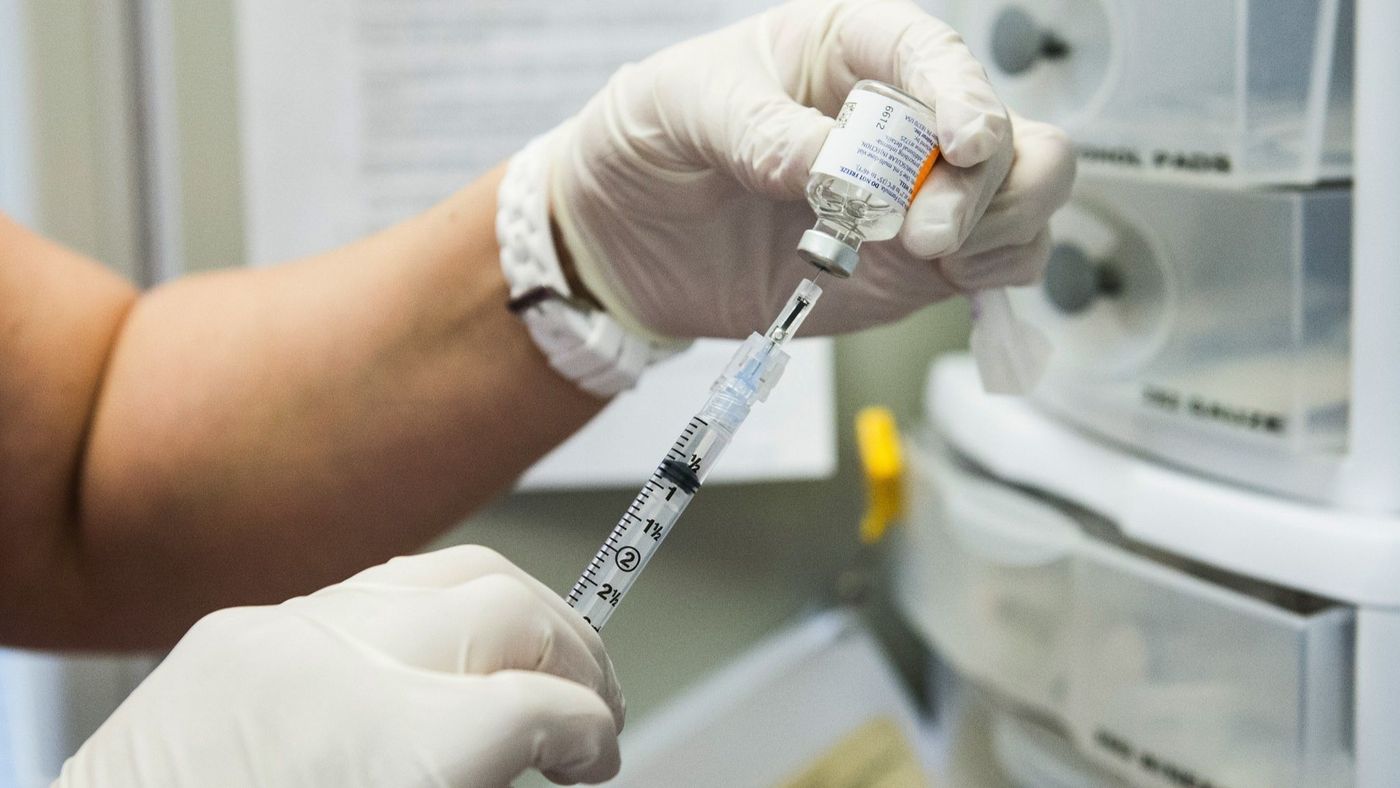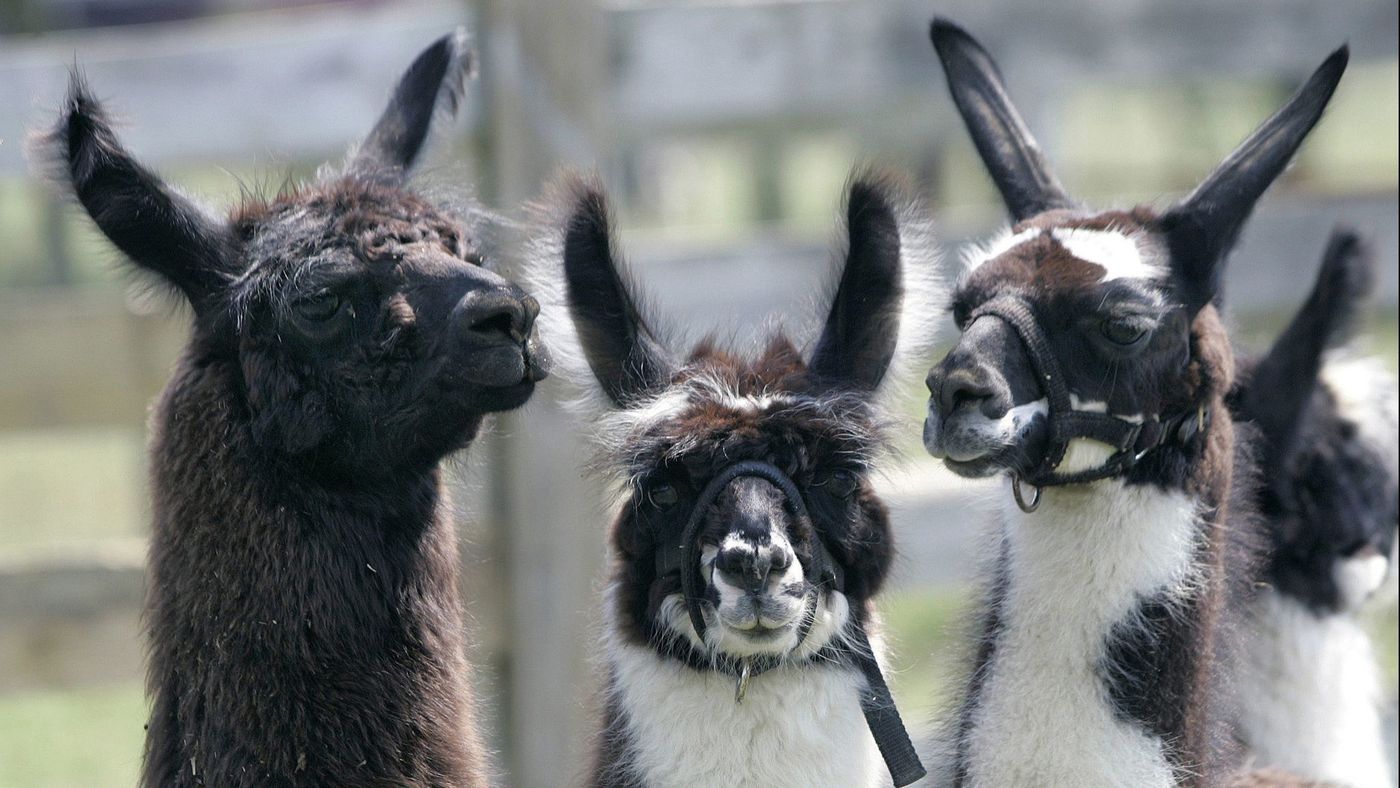|
Less than a week ago, Roche snagged
regulatory approval for Xofluza, a single-dose oral medication,
the first new flu treatment approved in 20 years. Now, new research
indicates that llamas, the doe-eyed South American pack animal, may hold
the key to flu vaccines.
The Los Angeles Times reports that a team from the Scripps
Institute in Southern California has been able to take antibodies
made by llamas and used them as the basis for a flu vaccine.
The llama antibodies are effective enough to work on a wide number of flu
viruses, according to the report. The Times reported that the
Scripps researchers reported their findings in the latest issue of Science.
According to the article
abstract, diverse camelid single-domain antibodies to influenza
virus hemagglutinin were used to generate multidomain antibodies with
impressive breadth and potency. In the study, the researchers used the
multidomain antibody MD3606 in mice. They found that the antibody
protected the mice against influenza A and B infection when administered
intravenously or expressed locally from a recombinant adeno-associated
virus vector.
“Collectively, our findings demonstrate that multidomain antibodies
targeting multiple epitopes exhibit enhanced virus cross-reactivity and
potency. In combination with adeno-associated virus–mediated gene
delivery, they may provide an effective strategy to prevent infection with
influenza virus and other highly variable pathogens,” the researchers said
in the article abstract.
The researchers noted that flu vaccines are essential to prevent the
spread of the virus, but the efficacy in them is “substantially reduced in
the elderly, who are at increased risk of influenza-related
complications.” The researchers added that annual selection of vaccine
strains presents many challenges and if the strains selected don’t match
up against circulating viruses, the vaccines are not as effective. Most
current flu vaccine-induced antibodies are directed against the highly
variable head region of hemagglutinin (HA) and are strain specific, the
researchers said.
However, the Scripps researchers were able to develop a single protein
from the llama antibodies that are capable of getting into the smallest of
spaces on the surface of a virus – spaces that are too small for most
proteins, the Times said. The multidomain antibody MD3606 is the
result and it could provide protection against most strains of the flu,
the researchers said. That would be true even if a strain of flu were to
change. The llama-based vaccine would be effective, the researchers noted.
If the vaccine were to pan out in human trials, that would be a
significant factor in preventing people from coming down with the flu,
which represents a serious health threat each year. Globally, there are
about 650,000 deaths from the flu worldwide and millions of people are
hospitalized due to the illness. According to the U.S. Centers for Disease
Control and Prevention, those people who are considered at high risk of
serious flu complications include people over the age of 65, as well as
people who have pre-existing conditions such as asthma, diabetes, heart
disease or chronic lung disease.
However, it will be years before the llama-based antivirus could
potentially find its way into use. There are numerous hurdles to overcome,
but the researchers are moving forward, the Times reported.
Scientists May Have
Found the Key Ingredient For a Universal
Flu
Vaccine, And It Comes From Llamas
by Melissa Healey Nov 2, 2018
Los Angeles Times
Along with soulful eyes, endearingly long necks and
warm fuzzy coats, llamas have a far less appreciated feature: They
make an array of immune system antibodies so tiny they can fit into
crevices on the surface of an invading virus.
That feat could one day protect humans from entire
families of flu viruses that bedevil scientists with their
unpredictable and shape-shifting ways.
All, potentially, with a once-a-year puff up the nose.
In a study in
Friday’s edition of the journal Science, a team from the Scripps
Research Institute in La Jolla and their
international colleagues have taken a major step toward the
long-sought goal of developing a universal vaccine against influenza.
When they tested their intranasal formulation in mice, it quickly
conferred complete protection against a raft of human flu strains
adapted to mice. Those include A viruses, such as the H1N1 “swine flu”
that touched off a global pandemic in 2009, and B viruses, which occur
only in humans.
Against H1N1, a dose of the experimental vaccine was shown to protect
for at least 35 days — a span of time equivalent to more than a single
flu season for humans.
Dr. Anthony Fauci, director
of the National Institute of Allergy and Infectious Diseases, offered
a full-throated appreciation for the new study, which received funding
from the National Institutes of Health.“From a scientific and
technical standpoint, this is really a very elegant study — the
highest quality of science,” Fauci said. He praised it for
demonstrating that in order to protect people from pathogens that can
change or emerge unpredictably, scientists must construct vaccines
that can knock down an array of viruses, even in people whose immune
systems are fragile or compromised.

A dose of flu vaccine is drawn into a syringe. By developing a universal flu vaccine, scientists hope to eliminate
the need to design a new shot every year. (Brent Lewis/Denver Post via Getty
Images)
Influenza is a viral scourge that kills as
many as 650,000 people each year, according
to the World Health Organization. To fight it, the research team
borrowed new techniques from immunology, microbiology, nanotechnology
and genetic engineering labs around the world.
First, they vaccinated llamas against a number of A and B strains of
influenza. Then they took blood samples to collect the antibodies the
llamas produced in response.
Among them were four uniquely small antibodies that showed an ability
to destroy many different strains of influenza. In a nod to their size
and function, they called their creations “nanobodies.”
From those multitasking little powerhouses, the researchers engineered
a single protein capable of squeezing into spaces on a virus’ surface
that are too small for most proteins. The resulting “multidomain
antibody MD3606,” with its “impressive breadth and potency,” could
confer protection against pretty much any strain of flu that nature
could throw in humankind’s way, the study authors said.
If the dominant strain in a given season were to
suddenly change, these antibodies would be ready for the unwelcome
guest. If a flu strain came out of nowhere and threatened a population
with no immunity to it — the nightmare scenario of pandemic flu — this
supercharged defender would recognize that flu and counter it. If
health officials guessed wrong about what flu strain was coming and
ordered up a vaccine that would be largely ineffective — a scenario
that played out last flu season — this package of antibodies could
save the day.
But the researchers still faced a key hurdle: getting
the human immune system to make such a super-protein even when it’s
weighed down by age, stress and disease.
Their solution: Don’t even try.
Instead, they devised a way to work around humans’
unreliable response to vaccines, building a gene that encoded the
production plans for their powerhouse protein. To ferry that gene into
a host organism, they enlisted a harmless
virus used by labs working on gene therapy.
By splicing their designer gene into this viral
delivery device, the scientists not only found a way to get their
antibody package into a host, they were delivering the manufacturing
machinery to produce it. This “passive transfer” of antibodies gives
this vaccine candidate the potential to be equally effective in
everyone, Fauci said.

A group of llamas look around on a farm in New Jersey.. (AP
Photo/Mel Evans)
The next step is to conduct further tests in animals
and clinical trials in humans, and that “will take years,” he said.
“But if fully successful — a majestic leap right now — it could
essentially eliminate the need from season to season” to divine which
of countless possible flu viruses will rear up, and to then build a
yearly flu vaccine that neatly fits the bill.
Scripps immunologist Ian
Wilson, the study’s senior author, said that
as the cells “infected” by the delivery virus turn over, repeated
doses might be needed to sustain the production of antibodies. “We
don’t really know how long this treatment would survive in humans
yet,” he said.
But even less-than-permanent immunity against a broad
range of flu threats would help buffer people from the emergence of
unexpected flu strains, Wilson said. And the rapid response of mice to
the vaccine suggests it could be used to inoculate a population after
a new viral threat has emerged, he added.
That the experimental vaccine might need to be
administered each year makes it an interesting hybrid, said Ted
M. Ross, who directs the University of
Georgia’s Center for Vaccines and Immunology.
“This approach is similar to antivenom,” said Ross.
“The therapeutic is an antibody that was made in another species to
neutralize the toxin. It’s short-term, but it gets you through the
period of time where bad things could happen.”
Over time, patients who got the same antibodies
repeatedly might start to build resistance to them, he said. Vaccine
makers could counter that by finding and including new antibodies in
their formulation every few years, he suggested.
Ross and other scientists also cautioned that the human
immune system might see the llama-derived proteins as foreign and
attack them.
This is not the only universal flu vaccine under
development. In May, Fauci’s NIAID launched the
first clinical trial to test the safety of a universal flu vaccine in
120 healthy humans. The candidate vaccine, called M-001, targets
portions of the flu virus that tend
not to change even as other proteins do.
This should prime the human immune system to recognize and fight many
different strains of influenza viruses.
Janssen Vaccines and Prevention, a Dutch company that
employs some of the study authors, has applied for a patent that would
cover some of the molecules described in the new report.
|

